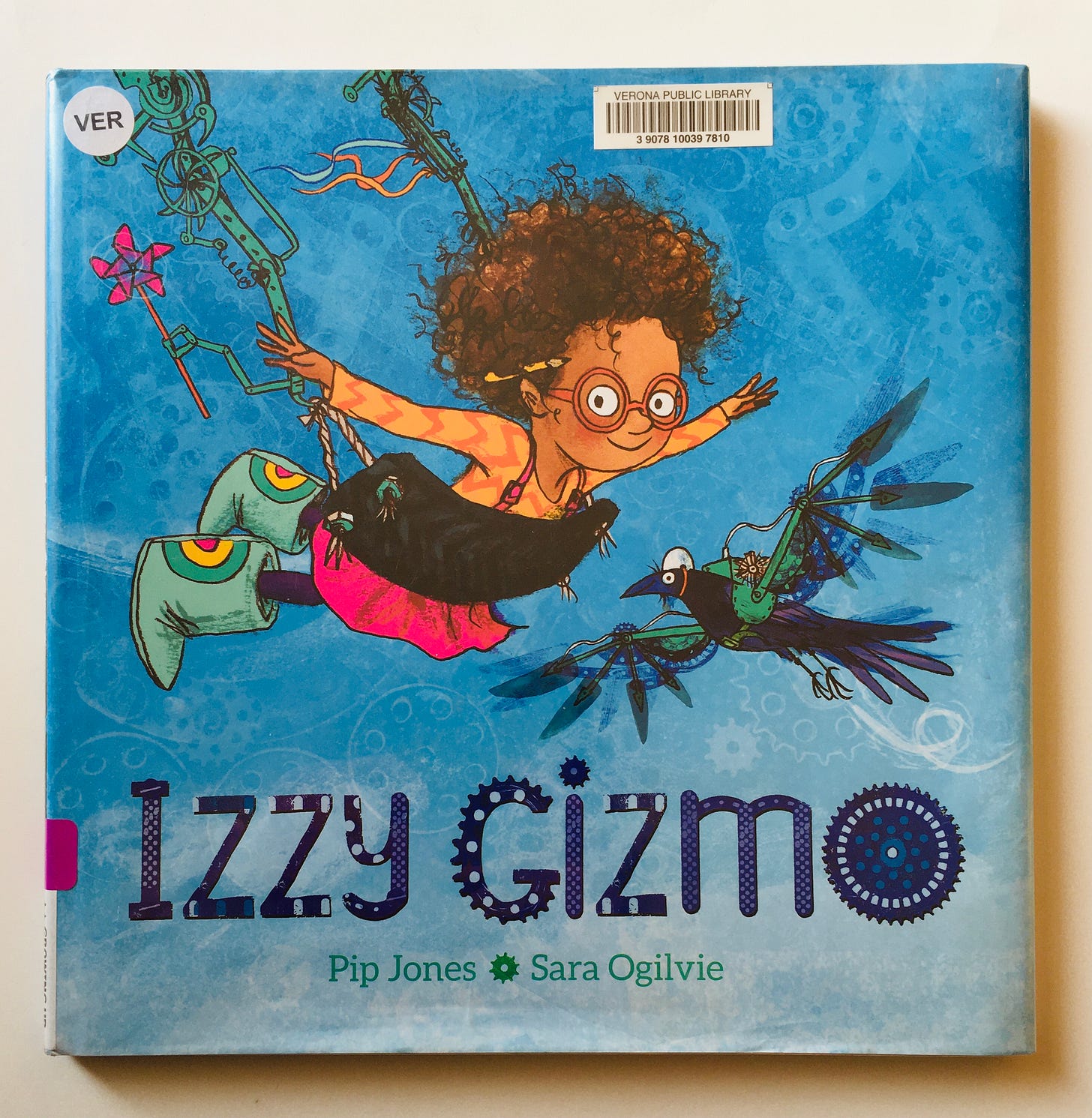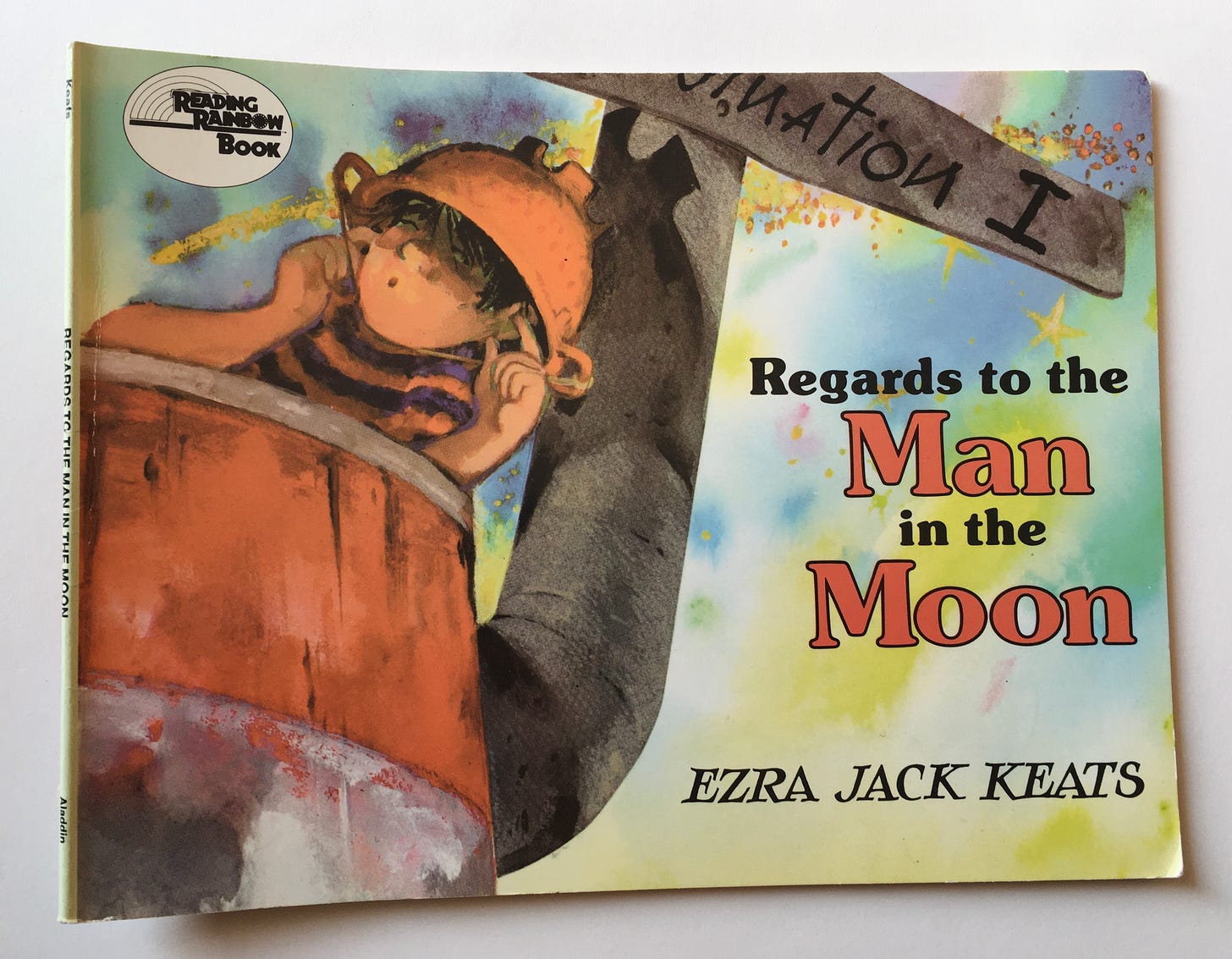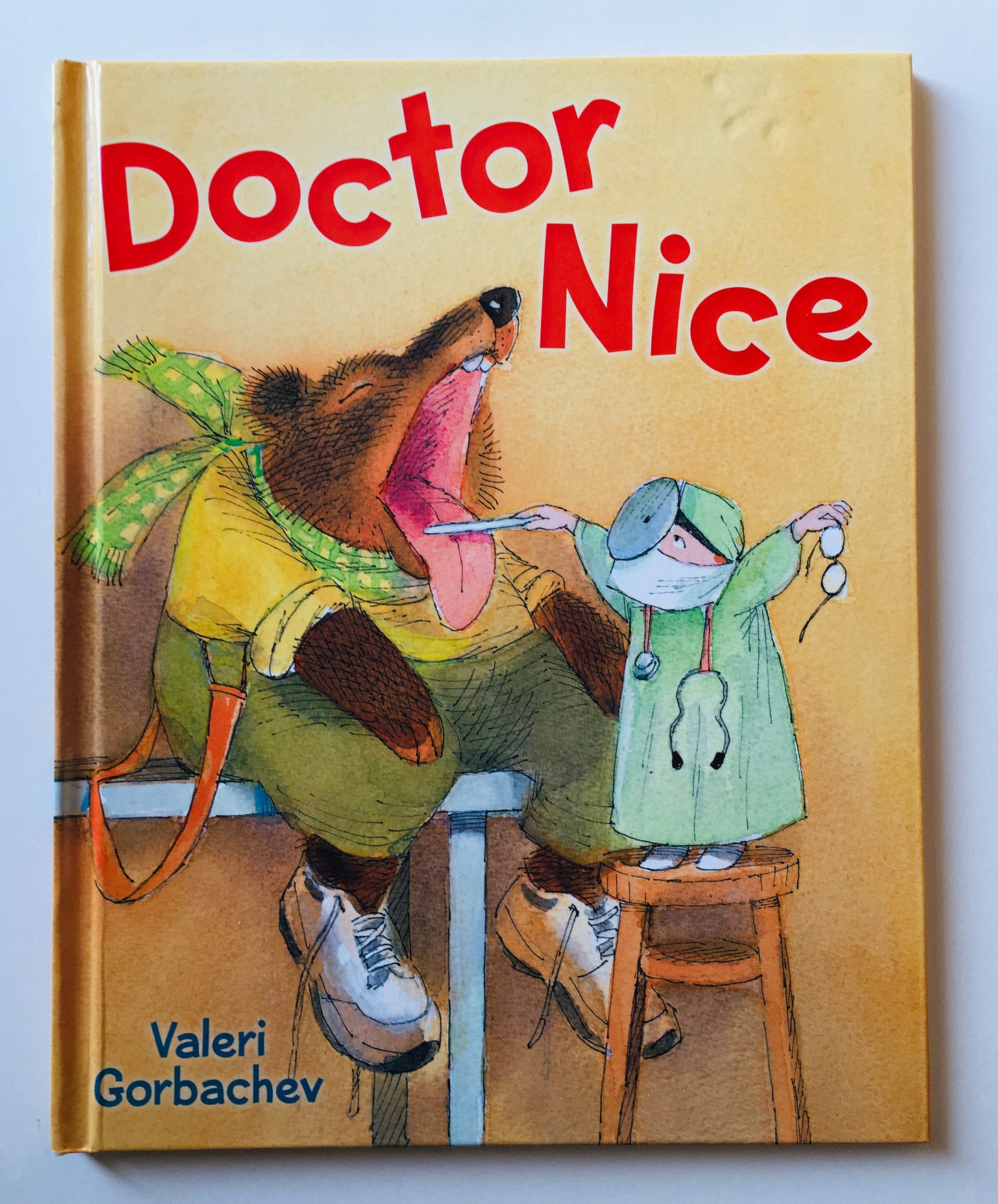Can we read? No. 30
I am headed into the deep north woods of Wisconsin tomorrow with my mom to do nothing but cross-country ski, sit around in my pajamas, and read and read and read for four days. I always love being up north but getting away to pine-treed nowhere after one whole pandemic year feels like I’ve won a tiny lottery, and I’m here for it.
Thanks for your (continued) patience with my not-always-fantastic lighting situation. Bright natural light is hard to come by in winter in Wisconsin so I do the best I can. (If you are a lighting expert or even just have amateur tips, hit me up. Obviously I need the help.)
Okay, onwards!
Izzy Gizmo by Pip Jones, illustrated by Sara Ogilvie (2017)
It took us (okay, me) awhile to jump on the Andrea Beaty Rosie Revere, Engineer wagon — not because I don’t love books about brilliant girls breaking the dominant gender paradigms that still exist in our culture and not because I don’t enjoy a good STEM/STEAM book, especially one that rhymes — but because I get lazy (and anti-authoritarian, because I am my mother’s daughter) about checking out whatever’s the hot new thing. So we didn’t pick up any of Beaty’s awesome titles (our favorite is Ada Twist, Scientist) for years, and we were totally missing out. That’s kind of how I felt when we opened Izzy Gizmo — okay, maybe I also felt that way because my 4yo shouted, “This is just like Rosie Revere!” (and yes, I internally cheered that I am raising readers who make connections to other books they’ve read). How did we not know about Izzy Gizmo, an imaginative and ingenious soul so obsessed with inventing that “she carried her tool bag wherever she went, in case she discovered a thing to be mended, or a gadget to tweak to make it more splendid?” No matter — my children and I were all just glad to have found her, to get to read her hilarious story of finding a crow with a broken wing, and all the, well, inventive things she does to try to fix it (bonus points here for portraying Izzy’s failures, her frustrations, and her perseverance in the face of these things). In many ways this title is better than Rosie Revere — Jones’ rhyming prose is tighter, with better flow, and Ogilvie’s pencil, ink, and oil pastel illustrations are more vivid and interesting to look at — but it doesn’t just hold up in comparison. This one — like its title character — tries very hard, keeps at it, and absolutely succeeds.
Regards to the Man in the Moon by Ezra Jack Keats (1981)
Not every Keats books is a hit — in fact some of them are downright odd — but what they always have is children, real children, and the creativity that’s so alive and thriving inside each and every one of them. Regards to the Man in the Moon is perhaps one of the best examples of this: Louie, a little boy who is being laughed at by other kids for his (suggested) adoptive father’s profession as a “junkman,” is encouraged by said father to to use his imagination. Louie does, deciding to go “outta this world” on a spacecraft of his own creation dubbed IMAGINATION I — he and his friends blast off, float past “strange and wondrous things and on through worlds no one has ever seen before.” When they bump into other friends who decided to follow, it turns out the stragglers have used up all their imagination and need Louie to help haul them home. If this all sounds a bit weird, it totally is — and that’s the great part. If adults have trouble seeing the creativity spilling out of every aspect of this story it’s because we’re adults — we’ve lost that spark, that magic touch that turns a pile of junk into a spaceship capable of navigating a storm of intergalactic rock monsters and the gumption to get ourselves home. Children, of course, have no problem with this, and that’s why this title works. Keats brings the story and the images — children do what they do best and supply the rest.
Doctor Nice by Valeri Gorbachev (2015)
Ukrainian author Valeri Gorbachev is one of those children’s book creators who seem to have flown mostly under the radar and yet I don’t know why — he has written more than 50 titles, and of the ones I’ve been able to get a hold of, they are, across the board, sweet and enjoyable. Doctor Nice is the perfect example of his work: “It was a busy day at Doctor Nice’s office. The waiting room was full. ‘Who’s first?’ asked Doctor Nice.” So it goes that a line of patients are tended to in this tender story about a little doctor who fixes a young crow’s broken foot (damaged while skiing), Moose’s cold (caught because of falling through the ice), two goat kids with headaches (that came on while head-butting one another playing hockey), a bear’s sore throat (acquired when he fell asleep in the snow), a pig’s frostbitten snout (injured while pressing it to a cold door), a cow’s wounded tail (obtained when she slipped on the ice). All these animals are real, with real problems, until the moment Doctor Nice is joined by a surprise character — his Mommy, who informs him it’s time for lunch — and the reader see the little practitioner surrounded by his stuffed toys. This is a warm read — supported nicely by Gorbachev’s watercolor and ink illustrations, which are always pleasantly mellow, even cozy — full of imagination, inventiveness, compassion, and good old TLC on all fronts. If you have a child who likes to doctor their stuffed animals or play veterinarian (as I did as a child for many years — my grandma still has several of my animals, sporting splints), don’t miss this one.
My Shadow by Robert Louis Stevenson, illustrated by Ted Rand (1990)
I’m not a huge Robert Louis Stevenson fan — I prefer his novels to his poetry if I have to choose, but also I spent enough years of my life studying the so-called Western canon to be pretty dang tired of the Dead White Men club that dominates the representation and discussion — but I am a huge fan of poetry, as you well know. And I am open to any book, anything really, that makes exposing my children to poetry an enjoyable and lovely experience for us all. This is where illustrated poems — especially those done well — come in. (There are many, many picture books that I consider poetic — that read like a poem — but in this instance, I am specifically talking about poems that once stood alone and then became illustrated picture books, like the beautiful My People by Langston Hughes, with photos by Charles R. Smith Jr. and Stopping By the Woods on a Snowy Evening by Robert Frost, illustrated by Susan Jeffers.) My Shadow is particularly well-suited to children — it was originally part of Stevenson’s collection, A Child’s Garden of Verses, so there’s that, but Rand has added a lot here with his fuzzy watercolor images and the way they help make the shadows obvious on every page. (If you’re familiar with some of Rand’s more well-known books — Night Tree; Here Are My Hands; Barn Dance, which I reviewed in issue No. 4 — you’ll recognize his style here.) This is a book I’ve found perfect for our Morning Time* — it’s short, it’s surprisingly entertaining given it was published in 1885, and even I have to admit: some things are canon for a reason. (Ugh. I don’t have to love it but I can recognize it with respect.) Respect to this book, which has been transformed into something even more worthy than the original alone.
*I wrote about Morning Time in the February issue of (How) Can we read?, which was all about reading routines
If you haven’t already replied to an issue of this newsletter with a question for me, I am still accepting them for the March issue of (How) Can we read?, which is an Ask Me Anything and will hit your inbox next week. Just hit reply on this message and let me know what you’d like to know 😊
Thanks for reading today. I hope the rest of the week brings you whatever you need most. (I’ll be sending good energy from the pines.)







